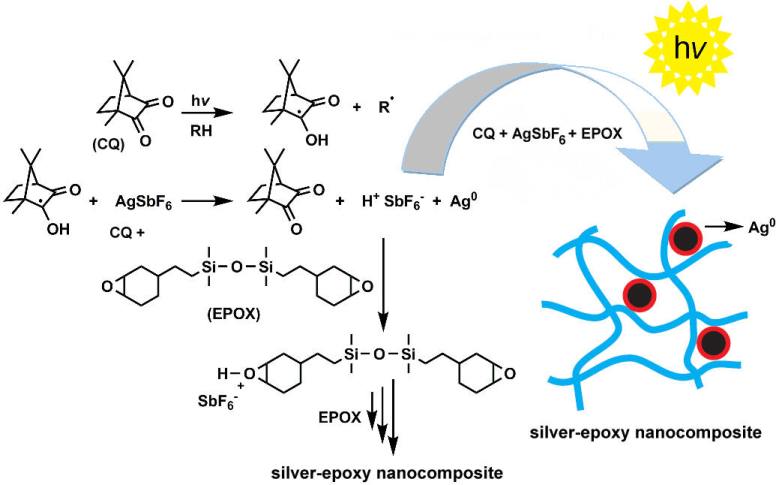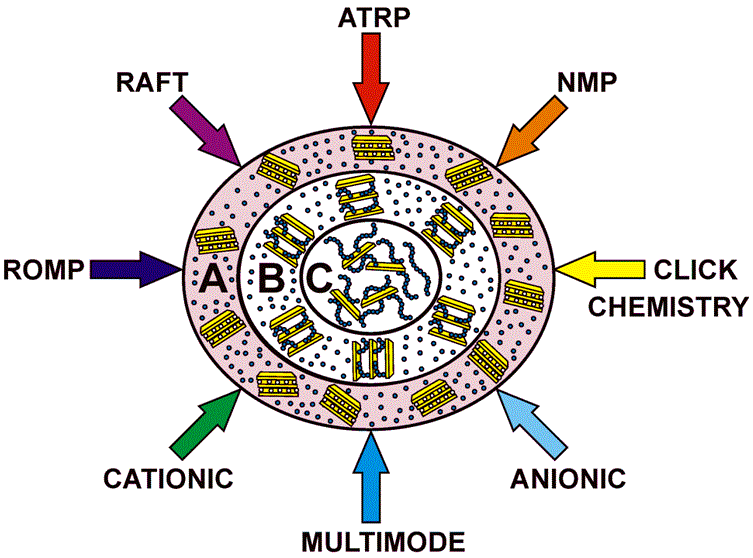| Nanocomposites |
 |
SYNTHESIS OF POLYMER/METAL NANOCOMPOSITES
Nanocomposite materials containing metal nanoparticles and polymer matrix may exhibit novel physical and chemical properties that are of high scientific and technological importance. These materials combine the physical properties of small size metal nanoparticles with those of polymeric materials in a beneficial manner. Many advanced optoelectronic and sensor devices are based on the fabrication of these materials. Because of their high surface free energy, nanoparticles tend to agglomerate. A key challenge for a potential technological use is the achievement of homogeneous dispersion of the thermodynamically unstable nanoparticles. Various methods have been applied. Generally applied methodology is detaining nanoparticles during the preparation by adding protecting agents or setting them in an inert environment. Among them, photochemical methods involving light induced reduction of metal ions such as Ag and Au complexes are of particular interest as they find a wide range of application including synthesis of metallic colloids, and metallization and patterning of films.
Recently, we have introduced a novel approach for the preparation of metal-polymer nanocomposites, in which nanoparticle formation and UV crosslinking process were accomplished in one pot by simply irradiating appropriate formulations, obtaining the homogeneous distribution of the nanoparticles within the polymer network without any macroscopic agglomeration. Silver or gold nanoparticles and initiaing species were formed in a single redox process.

POLYMER/CLAY NANOCOMPOSITES
The use of nanostructured fillers in the
polymer has gained significant importance in the development of
thermosetting composites. One of the more widely studied
nanocomposite strategies is the incorporation of layered
silicates into the polymer matrix. In comparison to other
nanoparticles, layered silicates belong to a unique group of
nanofillers with only one dimension on the nanometer scale. The
individual platelets of this filler are slightly below 1 nm in
thickness, and the diameter of the platelets varies between 200
and 600 nm.
Three methods have been developed over time for the synthesis of
polymer/clay nanocomposites: solution exfoliation, melt
intercalation and in situ intercalative polymerization. However,
the most common process to synthesize polyether/clay layered
silicate nanocomposites is via the in-situ polymerization, the
monomer, together with the initiator and/or catalyst, is
intercalated within the silicate layers and the polymerization
is initiated either thermally or chemically in situ. The chain
growth in the clay galleries triggers the clay exfoliation and
hence the nanocomposite formation.
We have described several synthetic approaches, namely cationic ring opening polymerization, activated monomer polymerization, photoinitiated free radical polymerization and “click chemistry” allowing the preparation of polymer/clay nanocomposites.
